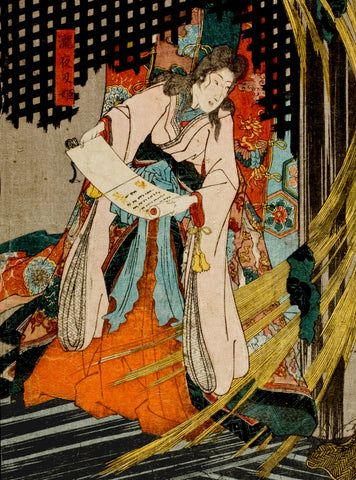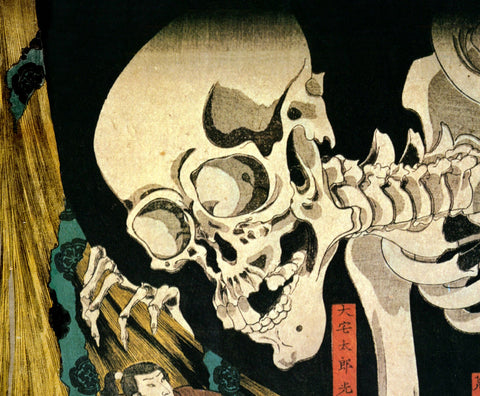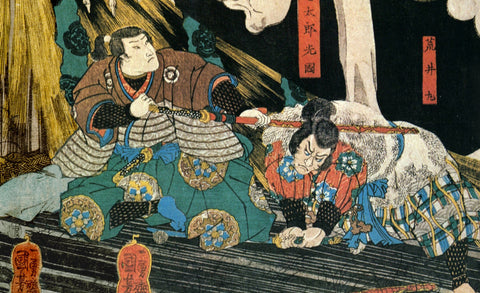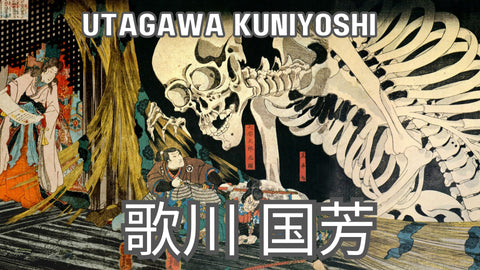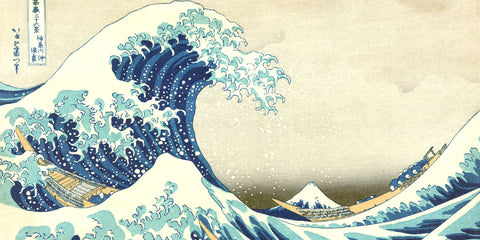Table of Contents:[hide]
In the mystical realms of Edo Japan during the Heian period, a riveting saga unfolds – a tale of rebellion, revenge, and the supernatural. At the heart of this narrative is the captivating woodblock print, "Takiyasha the Witch and the Skeleton Specter," crafted by the masterful Utagawa Kuniyoshi between 1843 and 1847. This blog post delves into the layers of history, folklore, and artistry woven into this enigmatic masterpiece.
The Historical Backdrop
-
The Samurai Warlord's Rebellion
In 939CE, the samurai warlord Taira no Masakado embarked on a fateful journey westward, challenging Japan's central government in Kyoto. Victorious for fifty-nine days, Masakado met his demise in the battle of Kojima at the hands of his cousin, Taira no Sadamori.
-
Princess Takiyasha's Plight
Following the revolt, Masakado's daughter, Princess Takiyasha, found herself in the decaying palace of Soma. Surrounded by the ghosts of fallen soldiers, she delves into witchcraft, fueled by a thirst for revenge against her uncle Sadamori.
The Artistic Tapestry
-
Summoning the Gashadokuro
Kuniyoshi's print captures a pivotal moment as Princess Takiyasha, framed by the broken palace blinds, invokes a spell to summon a Gashadokuro. This colossal yōkai, a skeletal entity assembled from the remains of famine victims, adds a chilling layer to the narrative.
-
The Intricate Detailing
Noteworthy is Kuniyoshi's attention to detail, particularly in depicting the Gashadokuro. In Edo Japan, anatomical studies were less systematic, yet the artist's accuracy in portraying the giant skeleton reflects his deep understanding, possibly influenced by the rare "Kaitai Shinsho."
The Storyteller Behind the Brush
-
Santö Kyöden's Horror Story
The narrative originates from the Story of Utö Yasutaka, penned by Edo poet Santö Kyöden in 1807. Kuniyoshi, a prolific Ukiyo-e artist, brought this chilling tale to life, illustrating various facets of Japanese folklore, history, and myth.
-
Anatomical Insights of Kuniyoshi
Kuniyoshi's meticulous portrayal of the Gashadokuro's skeleton hints at his access to the Kaitai Shinsho, a rare book of anatomical illustrations translated into Japanese. This showcases the artist's commitment to authenticity in an era with limited knowledge of anatomy.
The Modern Perspective
-
Mitsukuni: The Unlikely Hero
Despite the sympathy modern eyes may feel towards the vengeful princess, the intended hero of the print is Mitsukuni. He valiantly faces the witch and her monstrous creation in service of the Emperor.
-
Legacy and Influence
The legacy of "Takiyasha the Witch and the Skeleton Specter" extends beyond its historical roots. This iconic artwork contributes to the rich tapestry of Edo Period art, leaving an indelible mark on the depiction of witches and skeletons in artistic expressions.
Prints and Canvas Panels
Fine art prints and ready to hang canvas panels are avilable in a wide range of sizes to suit all spaces and budgets.


